What Are Vertical Garden Problems?
Vertical garden problems are issues like poor drainage, overwatering, uneven water distribution, soil compaction, and structural instability that affect plants grown vertically on walls, frames, or hanging systems. These challenges are unique to vertical setups due to limited soil volume and gravity-based water flow.
Introduction: Why Your Dream Vertical Garden Turns Puzzling 💧
Have you dreamt of making your balcony the talk of the colony with a lush, green vertical garden?
Maybe your wall was thriving a few weeks ago, but suddenly the leaves are yellow, the soil smells weird, and honestly, the whole setup looks tired.
Sound familiar, dost? I’ve been there.
In my Mumbai balcony, even I faced problems after that first monsoon—plants drooping, roots getting “choked”, and mysterious spots appearing everywhere.
Soon I learned that vertical gardens, though beautiful, bring their own set of challenges—not just in terms of sun and water, but also soil drainage and keeping plants healthy in limited space.
Don’t worry!
In this blog, I’ll walk you through the common vertical garden problems and solutions, sharing tips from my own experience (and mistakes), so you can enjoy a thriving green wall year-round—even in Indian climate!
Whether you’re dealing with waterlogged pots or struggling with “how to improve soil drainage in garden” setups, this guide covers everything from basic fixes to when you should call a professional.
Why Vertical Gardens Face Different Challenges in India
Vertical gardens look amazing—there’s no doubt!
But Indian conditions (humidity, unpredictable rains, heat) create special issues:
- Very Limited Soil Volume: Less buffer for water and nutrients than big pots/ground beds.
- Drainage Problems: Heavy monsoon rains + small pots = soggy roots and “choked” soil.
- Structural Issues: Walls and railings may not support regular weight, especially if you use clay soil.
- Watering Confusion: Some plants get drenched; others are thirsty. Drip-down watering can fail.
- Pest and Disease Spread: Compact setups mean problems can spread fast.
These challenges make “how to improve soil drainage in raised beds” and planters critical!
Many beginners “water daily” but their bottom row turns swampy while the top dries out.
According to research from Better Homes & Gardens, vertical gardens need 30-40% more attention to drainage than traditional ground beds due to limited root space.
Let’s see these common vertical garden problems and solutions in detail with stepwise fixes from my gardening trials.
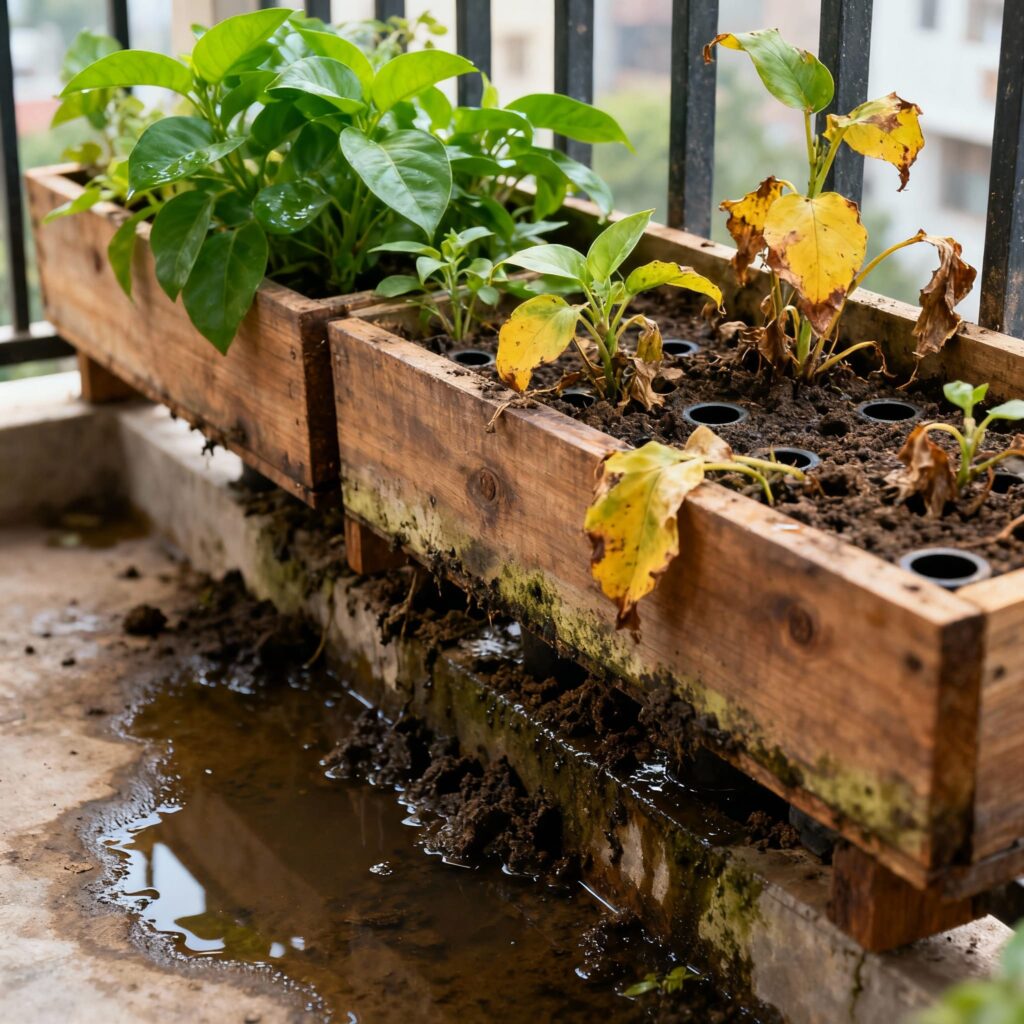
💡 Pro Tip #1:
Take photos of your vertical garden every week. Visual tracking helps you spot early signs of drainage problems, pest attacks, or nutrient deficiency before they become serious!
Problem #1: Poor Drainage and Waterlogged Soil
How to Spot It:
- Leaves look yellow and soft
- Soil gives off a sour, rotting smell
- You see standing water after watering
- Roots look black/mushy when you poke around
Waterlogging is the enemy in vertical setups—unlike ground beds, water can’t drain away sideways.
In my Pune home, kadai-style pots were always staying wet after a big rain—it nearly killed my basil!
This is one of the most frustrating common vertical garden problems and solutions beginners face.
How to Improve Soil Drainage in Garden (Vertical Setup)
Here’s my checklist for quick drainage fixes (especially if your plants are always “drowned”):
- Check Pot Holes: Ensure every pocket or planter has at least one big drainage hole (minimum 1cm diameter).
- Add a Pebble Layer: At the bottom, add 1-inch of gravel, crushed brick, or old pieces of terracotta for better outflow.
- Mix Cocopeat + Perlite: Get good drainage by using 40% cocopeat, 20% perlite, 20% compost, 20% soil.
- Don’t Use Only Clay Soil: Heavy soil = problems.
- Learn the right watering frequency for common plants on a vertical wall (see my guide on proper watering schedule).
Experts at Gardening Know How recommend testing drainage by pouring water and checking if it flows out within 5-10 seconds.

How to Improve Soil Drainage in Clay Soil
Clay soil is common in India, but it locks in water (aur kya chahiye root rot ko!).
If your vertical planters are heavy and retain soggy soil:
- Always lighten up clay soil by adding sand (30%) and lots of compost.
- Add gypsum to help break clay lumps for “airy” soil.
- Mix in cocopeat and perlite for consistent, sponge-like moisture.
- This is essential for anyone wondering “how to improve soil drainage in clay soil” in vertical setups.
For ongoing care, try these vertical garden maintenance practices.
According to The Spruce, clay soil can retain up to 50% more water than loamy soil, making amendments crucial for vertical gardens.
🌱 Did You Know?
Clay soil particles are 1000 times smaller than sand particles! That’s why water gets trapped so easily. Adding coarse materials creates “breathing space” for roots.
Problem #2: Overwatering and Root Rot
Beginners often “love” their plants so much, they drown them!
It’s super common during Indian monsoon, or when you follow a fixed watering schedule.
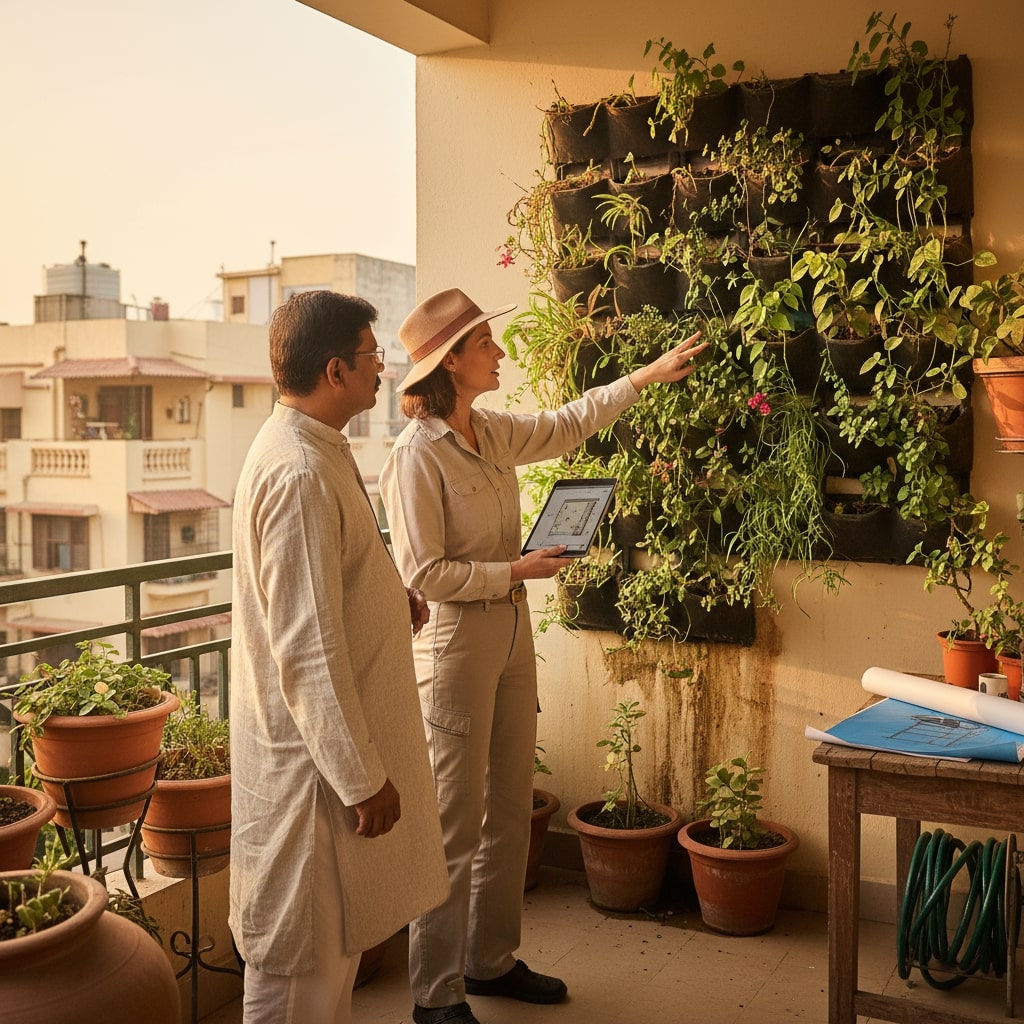
Common Signs You’re Overwatering:
- Soil surface is always wet/green
- Plants lose firmness; some leaves become transparent
- Unpleasant smell from root zone
- Roots look brown/black if you check under the soil
Once, my money plant in the middle of the wall was constantly soggy—the roots couldn’t breathe, and the whole thing started to stink.
Yaar, I learned the hard way about “less is more”!
If you keep having to look up “how to improve soil drainage in raised beds“, you’re probably overwatering or have drainage issues.
For more plant-specific guidance, check my spider plant watering tips.
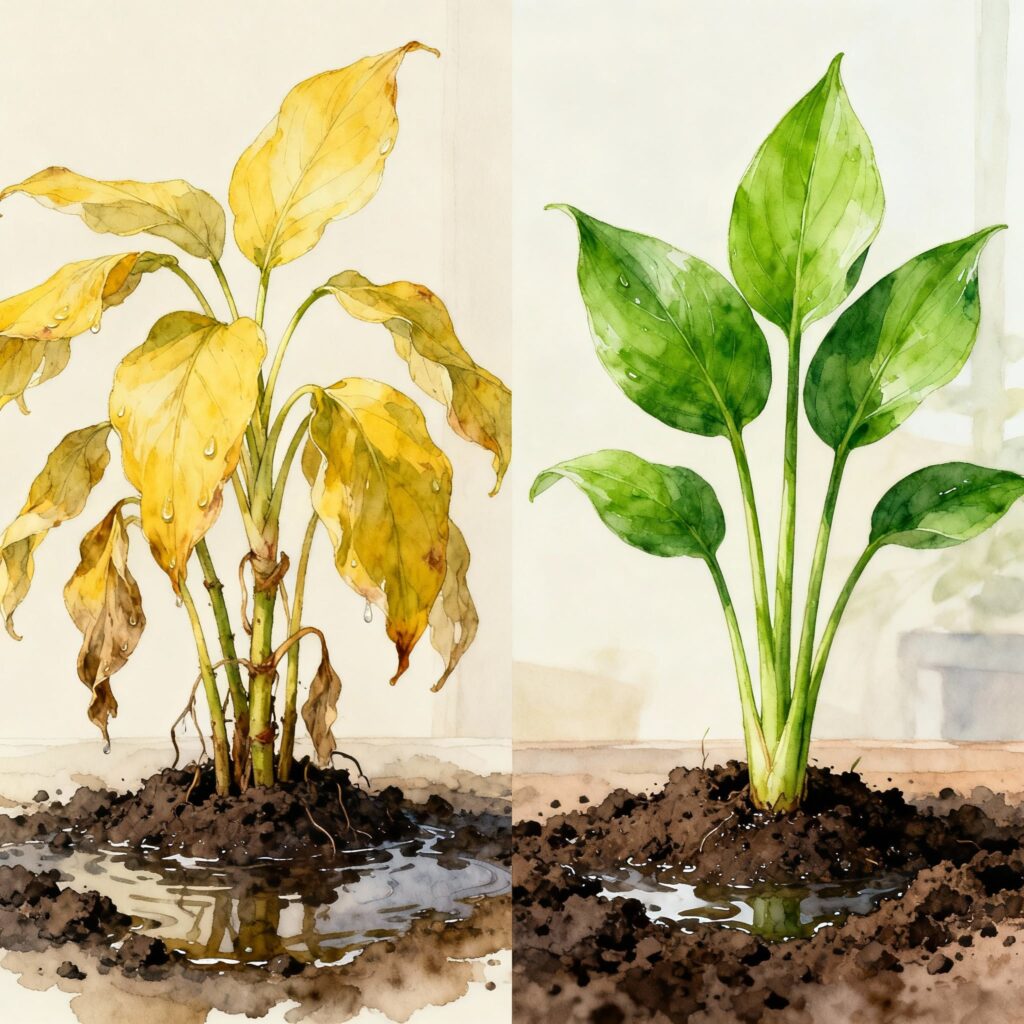
Quick Fix: Adjusting Watering Schedule
- Use the finger test: Stick your finger 2cm into the soil. Only water if dry.
- Change frequency with the seasons: Water every 2–3 days in summer, once a week in monsoon, every 4–5 days in winter.
- Never water late evening (especially in humidity).
- If using cocopeat, reduce frequency (it holds moisture well).
This approach helps you master “how to improve soil drainage in garden” by preventing overwatering in the first place.
Problem #3: Uneven Water Distribution Across Tiers
Ever noticed how the top section of your green wall is always dry but the bottom is mushy?
This uneven water distribution is a classic common vertical garden problems and solutions challenge.
- Water usually “trickles down,” meaning top pockets dry first.
- If you have a DIY setup, gravity can leave top plants thirsty.
- Bottom plants may get “double watering” from runoff.
DIY Drip System for Vertical Gardens
What worked for me (and made watering much easier):
- Use a simple bottle-drip: Punch 3–4 holes in a 1-litre plastic bottle, fill, and place upside down in the top pocket.
- Space bottles or drip lines so every 3–4 plants get one.
- Set up a basic drip irrigation kit for even coverage (great investment for peace of mind).
- This DIY trick helps you “improve soil drainage in garden” walls by ensuring balanced moisture.
Want help choosing the right kit? See my table of best drip-irrigation systems below!
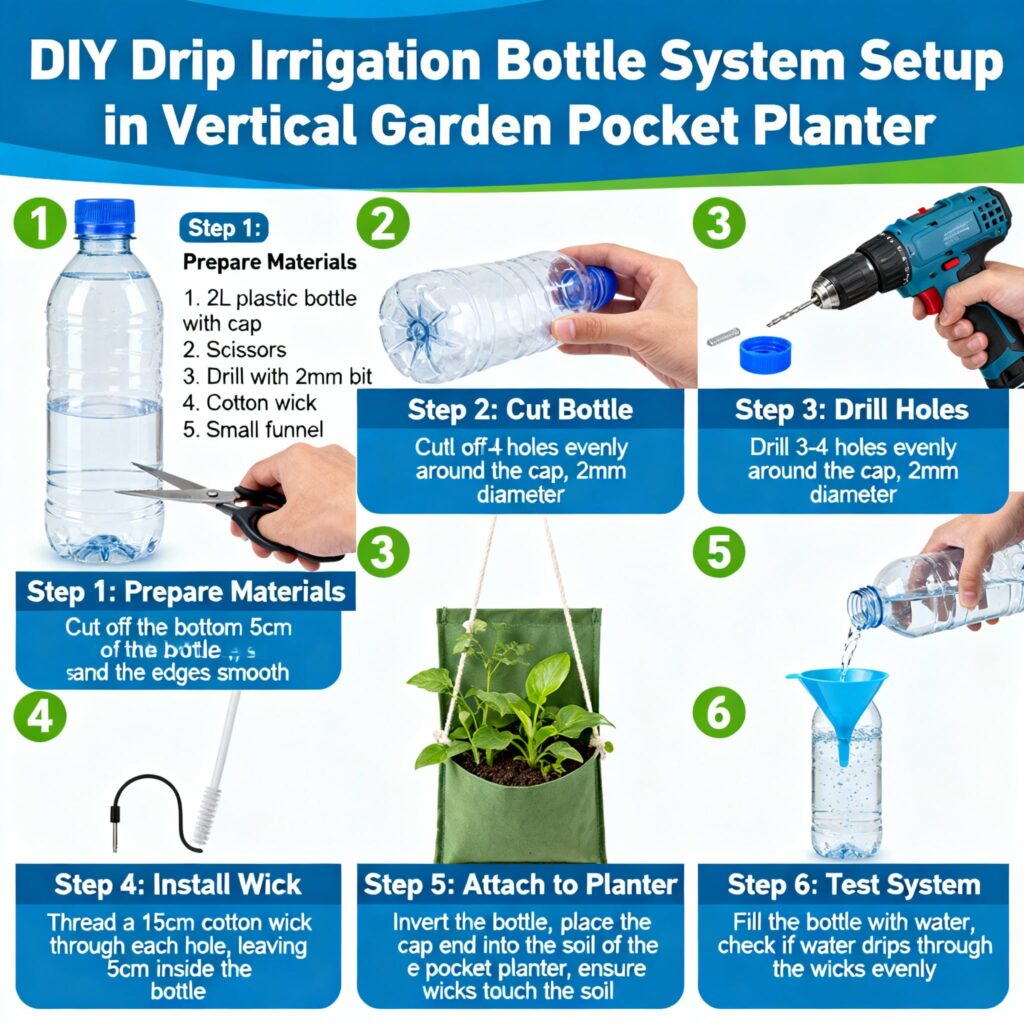
💡 Pro Tip #2:
Set a phone reminder to check soil moisture in top and bottom planters separately. This habit prevents uneven watering disasters during busy weeks!
Step-by-Step Guide: Fixing Drainage in Your Vertical Garden
I learned (sometimes the hard way!) that fixing drainage means a proper overhaul.
Here’s my proven, easy process for solving common vertical garden problems and solutions:
Step 1: Assess Current Drainage
Remove a plant and feel the soil—if it’s dense, smelly, or sticky, you need to act fast.
Check “how to improve soil drainage in clay soil” guides if you see any gray, hard clumps.
Step 2: Remove Plants Safely
Use a spoon or small trowel; shake off excess soil and place plants in shade with roots covered.
Step 3: Clean and Inspect Planters
Wash old soil out, scrub away algae/slime, and re-check all drainage holes.
Yes, this is similar to “how to improve soil drainage in raised beds“.
Step 4: Add a Drainage Layer
Line the base of pockets (or beds) with 1 inch of pebbles/gravel.
Use old nets or coconut husk to prevent clogging.
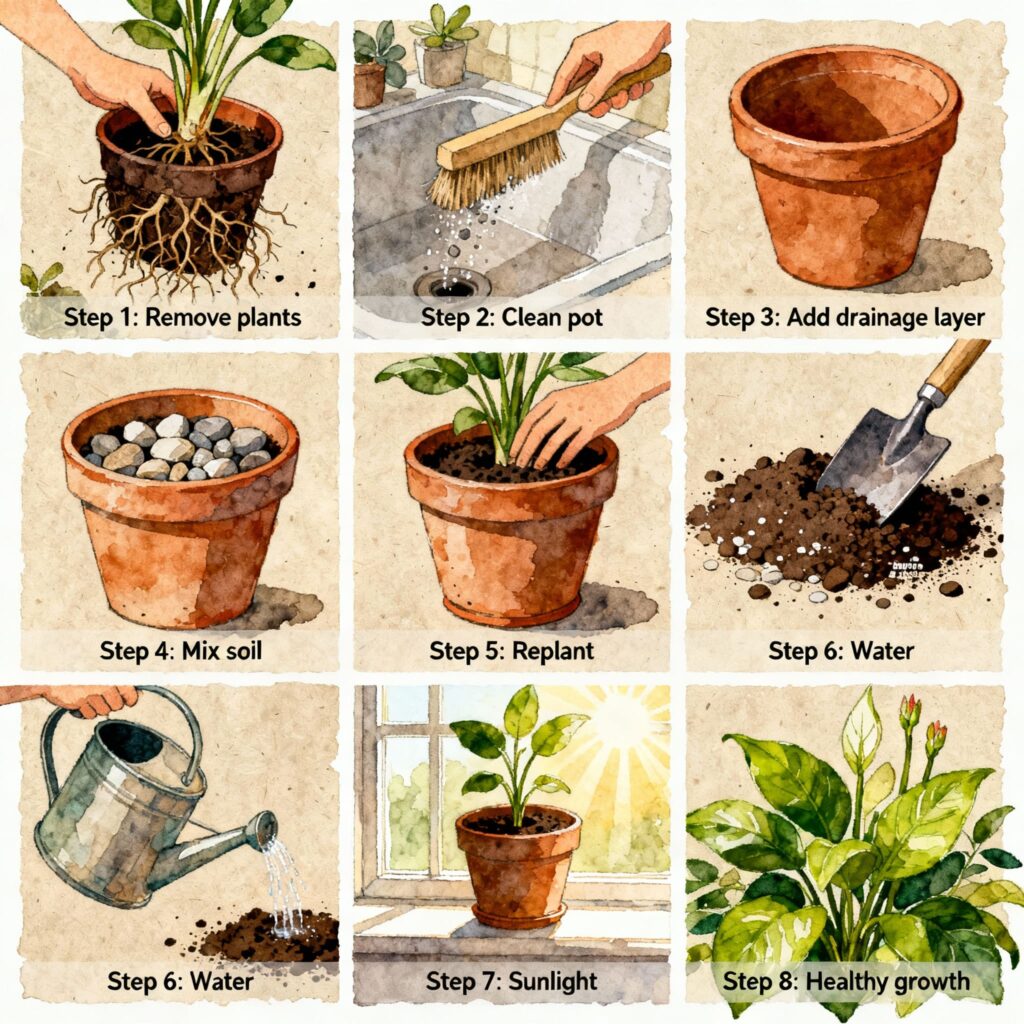
Step 5: Improve Soil Mix—The Secret Ingredient
Make sure you use a custom mix:
- 40% cocopeat
- 30% organic compost
- 20% garden soil or leaf mold
- 10% perlite (if possible)
This will dramatically “improve soil drainage in garden” walls.
Step 6: Reinstall Plants With Spacing
Leave an air gap; don’t cram roots.
Allow 2-3 cm space from the pot edge.
Step 7: Water Test
After repotting, pour water—look for clean outflow from holes.
This is proof you’ve “improved soil drainage in clay soil” and garden beds.
Step 8: Monitor for 2 Weeks
Move pots if one spot stays soggy.
Watch for new healthy growth as confirmation.
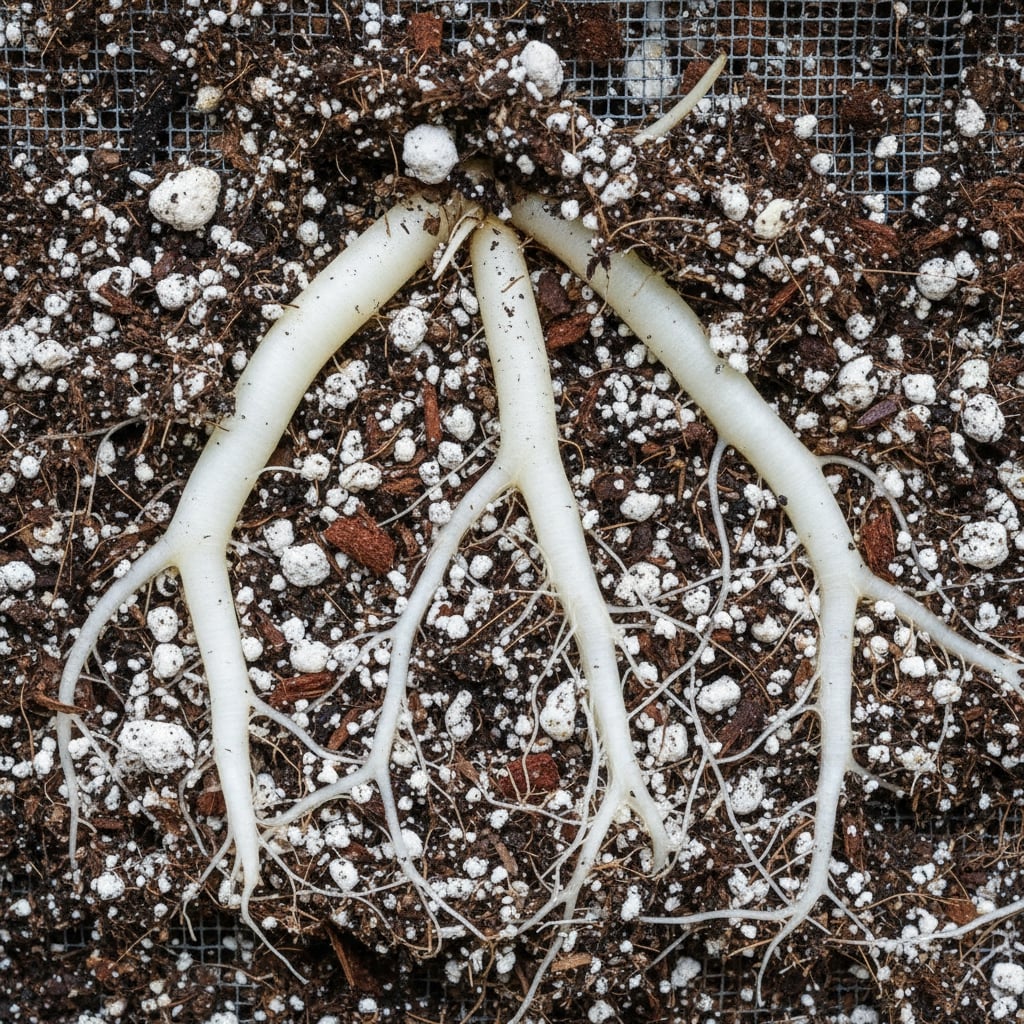
Problem #4: Soil Compaction and Nutrient Loss
Vertical gardens need lighter soils, but over time the soil “shrinks,” gets hard, or becomes barren.
You’ll know something is wrong if:
- Soil doesn’t soak water anymore, or runs off edges
- Roots sit in a dense, airless mass
- Plants have stunted growth or yellowing leaves
- Water pools on the surface instead of soaking in
Best Soil Amendments for Vertical Gardens
- Add 20–30% vermicompost or cow dung compost every 3–4 months.
- Top-dress with cocopeat/perlite to maintain fluffiness.
- Use worm castings or leaf mold to boost nutrition.
- For good results, aim to “improve soil drainage in raised beds” every season.
- Try my favorite eco-friendly plant options that do well in vertical setups!
This is a key part of understanding common vertical garden problems and solutions.
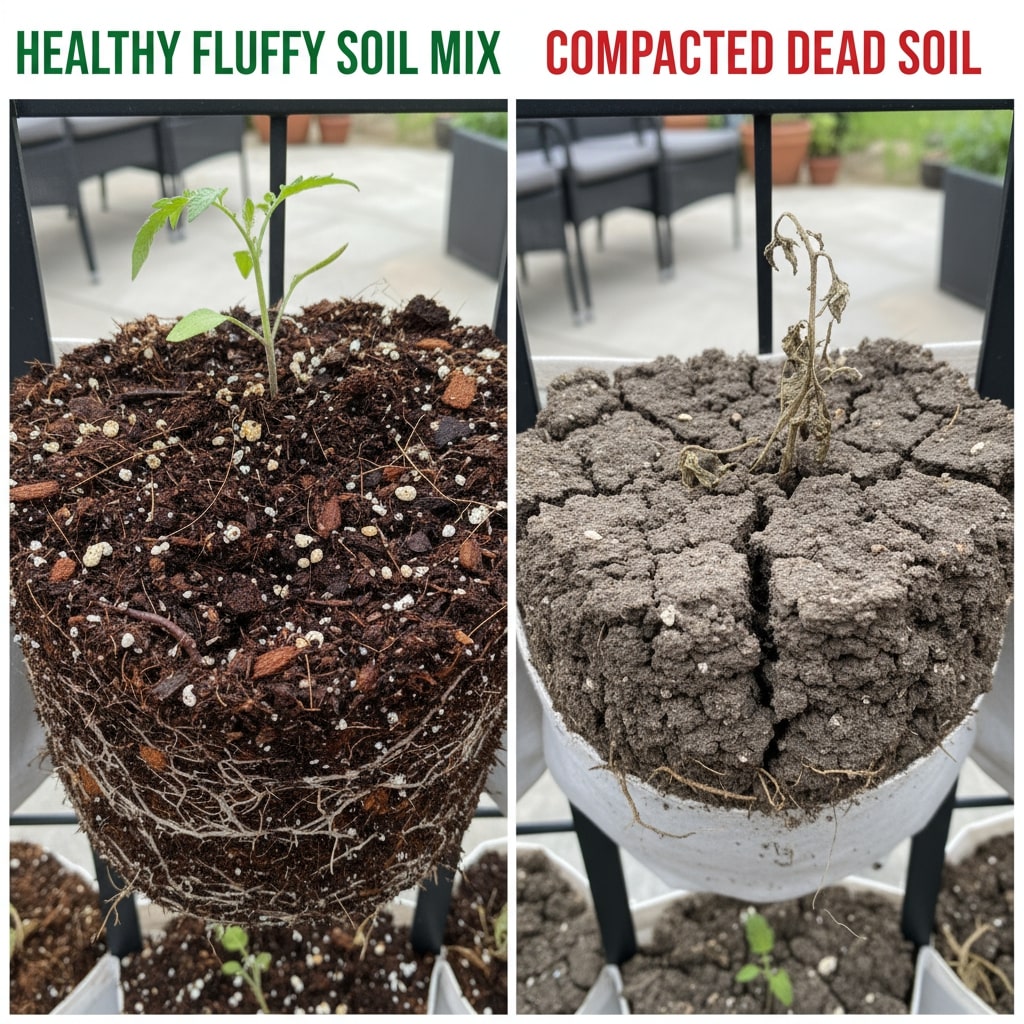
🌿 Did You Know?
Cocopeat can hold up to 8 times its weight in water while still allowing air circulation! That’s why it’s the secret weapon for vertical gardens in Indian climates.
Problem #5: Weight and Structural Issues
Many friends message me after their vertical garden starts “pulling away” from the wall or rails, especially in monsoon.
Safety first, yaar!
- Never overload with clay soil (too heavy when wet).
- Use lightweight pots or vertical wall panels made for drainage.
- For “how to improve soil drainage in garden” structurally, you must avoid heavy media and check mountings every few months.
- Spread weight evenly; use extra wall brackets for long setups.
- Call a pro if you notice cracks or movement.
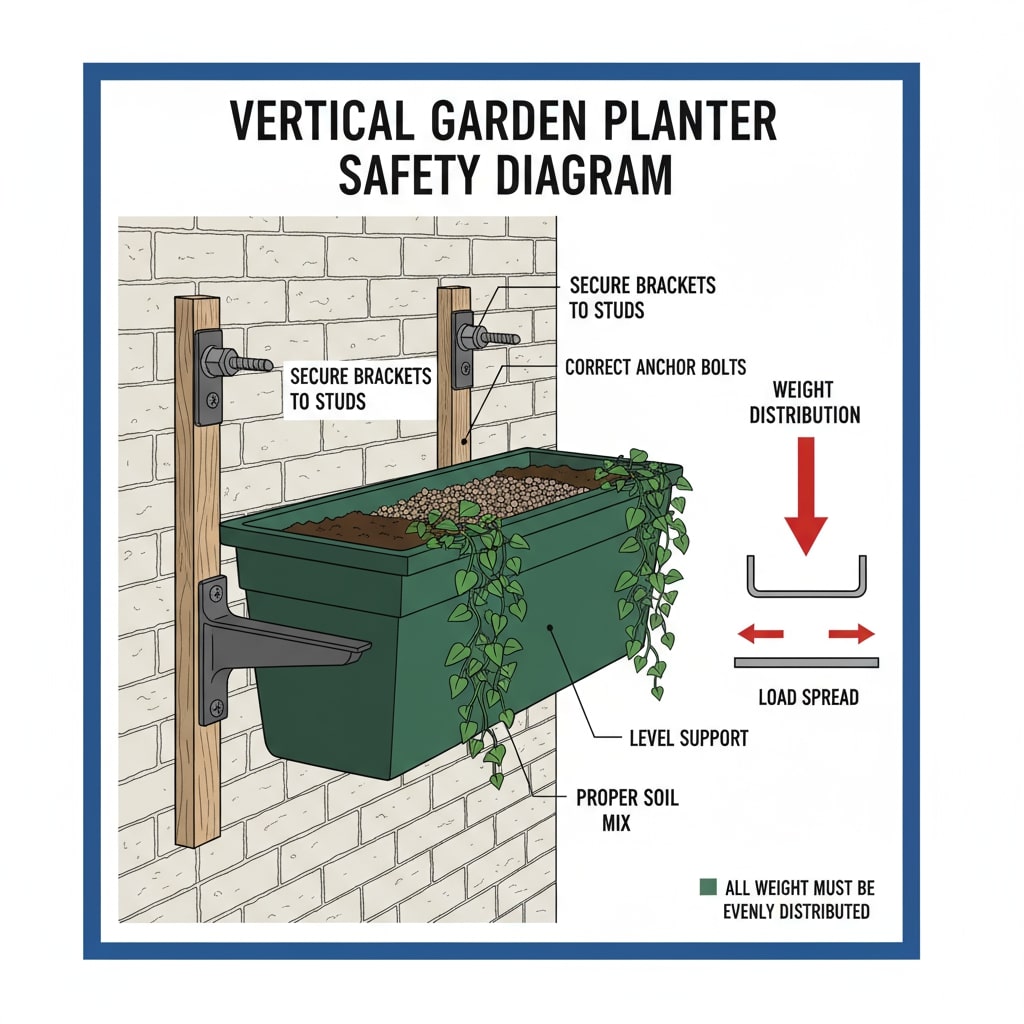
When to Call a Professional
📦 When DIY Isn’t Enough (Boxed Section)
If you’ve followed all these common vertical garden problems and solutions but nothing works, it’s time to get help!
Here’s when you should ask “who to call for drainage problems in yard” (or balcony):
- Water still pools on your wall/floor despite new drainage
- You see seepage or algae on nearby house walls
- The structure is moving, shifting, or feels unsafe
- Persistent plant death despite correct watering
Who to Call for Drainage Problems in Yard:
- Landscape Installer for complete green wall overhauls
- Garden Drainage Specialist (especially for large terrace setups)
- Mason or Builder if wall damage/structural issues occur
- Horticulture Consultant for persistent plant health issues
Knowing “who to call for drainage problems in yard” can save you from expensive repairs later.
Ask for references and check their completed jobs.
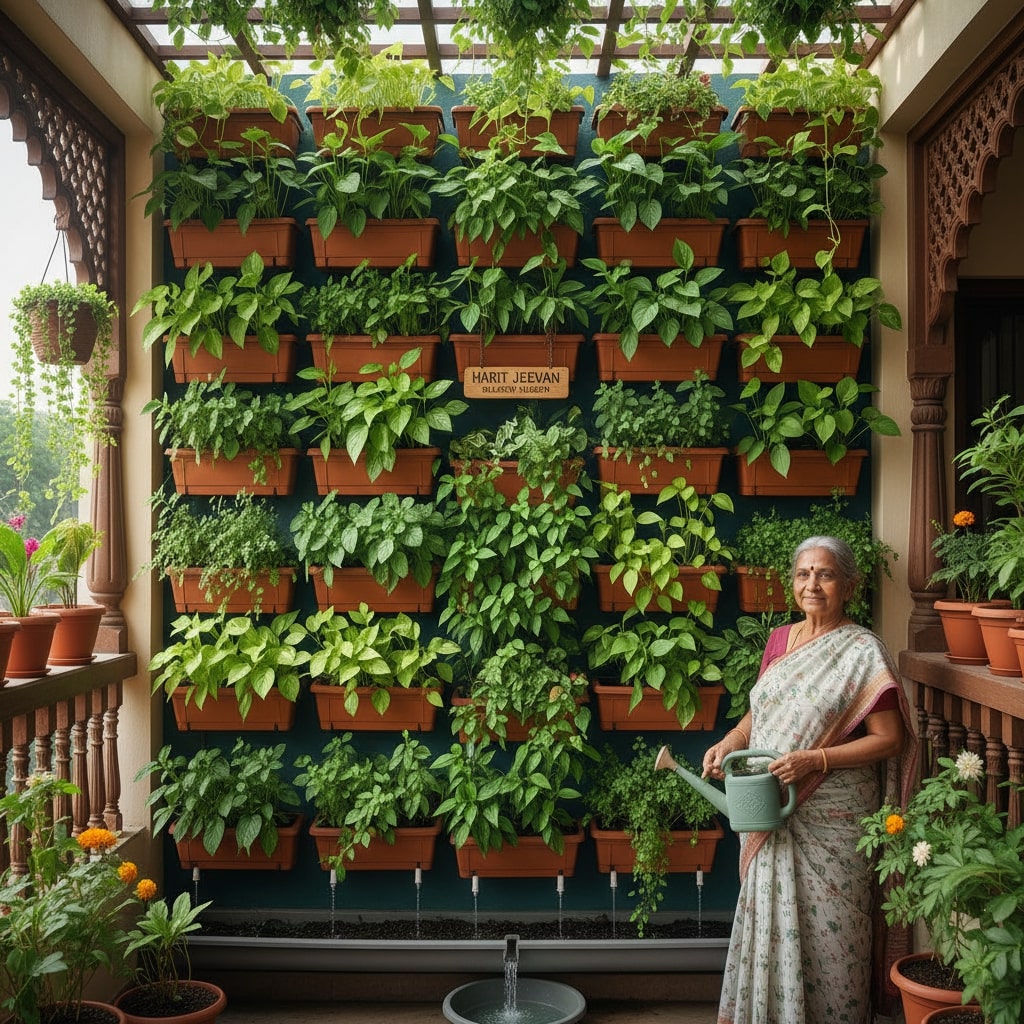
Who to call for drainage problems in yard services can cost from ₹500 (consult) to ₹4,000+ (full structure).
Don’t wait for a disaster!
Many people struggle with “who to call for drainage problems in yard” because they don’t know whether to hire a gardener, plumber, or contractor—start with a landscape expert who can assess the full situation.
💡 Pro Tip #3:
Before calling a pro, take photos and videos of the problem areas. This helps them give accurate quotes and shows you the “before” state for comparison later!
Recommended Vertical Garden Kits and Drainage Tools
Finding the right product can honestly save you tears (aur paise bhi!).
Here are my tried choices for every common vertical garden problem and solution.
These help you “improve soil drainage in raised beds” and vertical setups effectively.
(Affiliate links: honest recos!):
| Product | Best For | Features | Price (₹) | Buy Link |
|---|---|---|---|---|
| TrustBasket Vertical Garden Planter | Small balconies, new setups | 12-pocket, built-in drainage, UV-proof | 1,299 | Amazon |
| Aqua Systems Drip Kit for Walls | Uneven watering, many plants | Timer, 20 adjustable drippers | 1,899 | Flipkart |
| Cocogarden Cocopeat + Perlite Mix | Improving drainage, fluffiness | Pre-mixed, pest-free, organic, 5kg | 649 | Amazon |
| Green Planet Raised Bed Kit | Clay soil beds, heavy setups | Mesh lining, gravel layer, cut-to-size | 1,199 | Flipkart |
| Meco 3-in-1 Soil Tester | Diagnosing moisture & pH | Digital display, no batteries needed | 549 | Amazon |
| Plantex Steel Wall Brackets | Structural safety | Rustproof, works with brick/concrete | 599 | Flipkart |
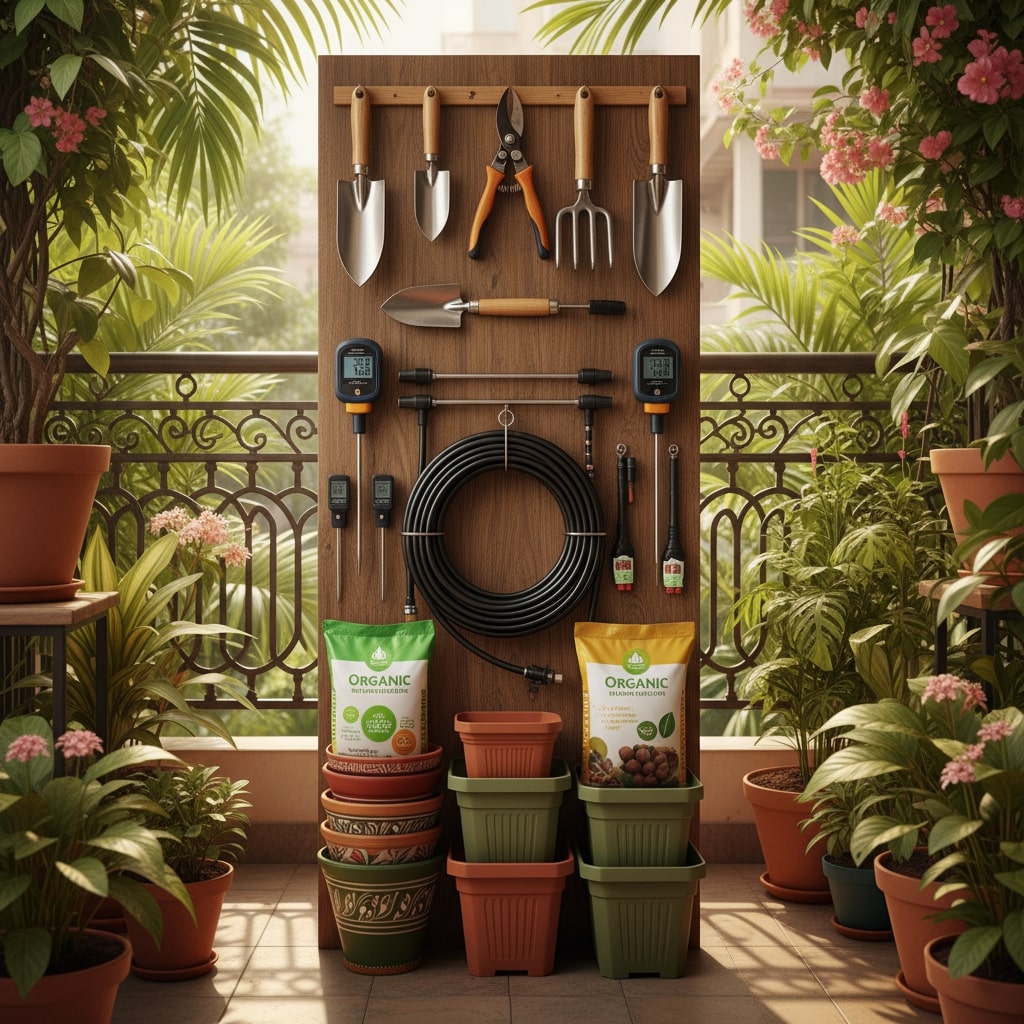
Quick Checklist: Preventing Drainage Problems
✅ Copy-Paste This Checklist for Peace of Mind!
- ☐ Check all pocket/pot drainage holes monthly
- ☐ Add 30% cocopeat or perlite to every soil batch
- ☐ Adjust watering by season, not habit
- ☐ Add a gravel layer at the bottom for new planters
- ☐ Test soil pH and moisture every 3 months
- ☐ Give a nutrient top-up every 4 months
(For detailed “how to improve soil drainage in clay soil“, refer to my tips above!)
This checklist addresses the most common vertical garden problems and solutions before they start.
Mistakes to Avoid in Vertical Gardening
Some rookie errors can set you back weeks, trust me.
Here’s what not to do:
- Overwatering in the monsoon—let nature do half the work!
- Using only garden soil or red mud in wall planters (leads to waterlogging)
- Ignoring blocked drainage holes after a dusty storm
- Skipping regular feeding/soil top-ups (plants get “hungry” fast)
- Not rotating plants—leaves block sun for lower rows
- “Lifting by guess”—check weight/safety before adding more pots
- Watering at midday—causes rapid evaporation and water stress
For ongoing tips, brush up on regular maintenance practices for indoor & outdoor vertical gardens.
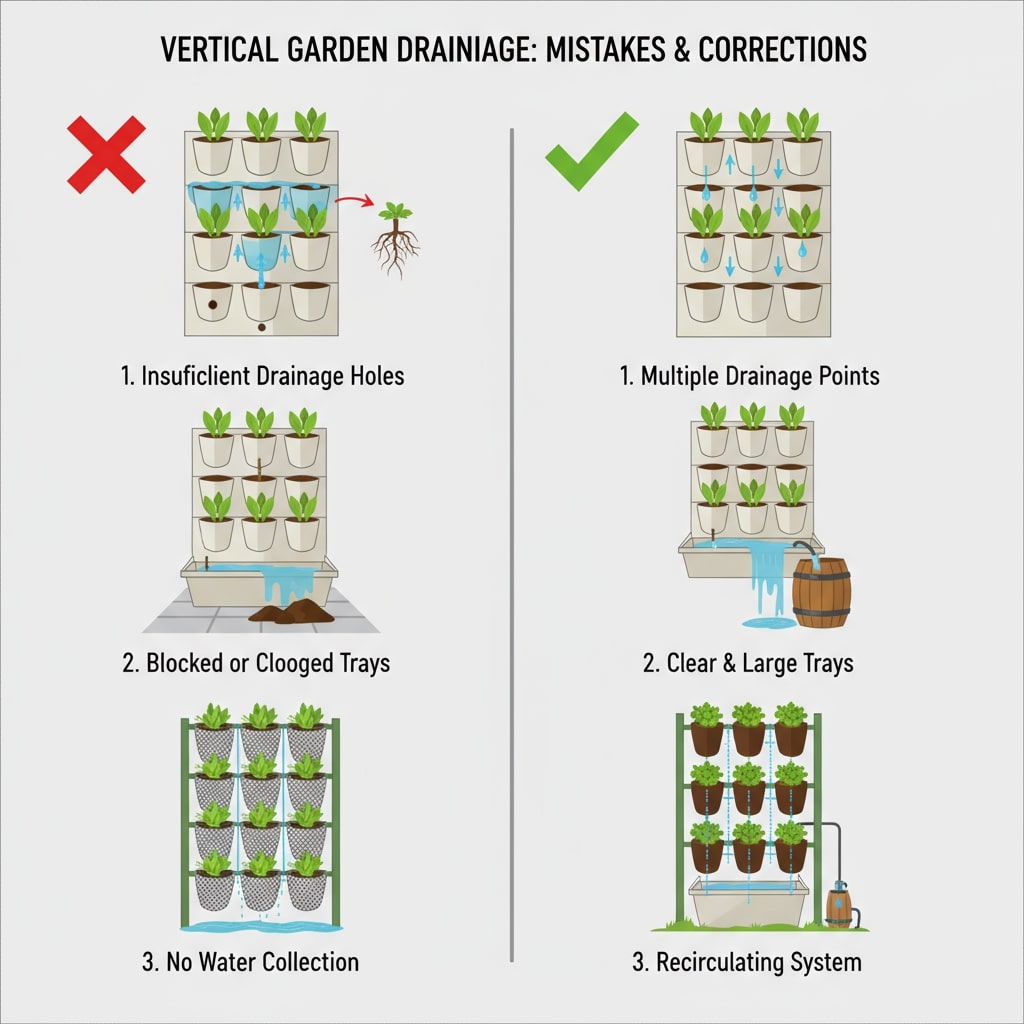
Eco-Friendly Fixes for Vertical Garden Problems
Switching to natural products and plants can dramatically boost your green wall’s health!
Consider:
- Using cocopeat, leaf mold, and home-made compost for soil mixes
- Adopting vermicompost tea for light, frequent feeding
- Growing drought-friendly, “self-tough” species
- Recycling kitchen waste for nutrient-rich compost
See my guide to eco-friendly plant options for the best vertical-variety picks!
These sustainable solutions are part of the best common vertical garden problems and solutions toolkit.
🌱 Pro Tip #4:
Save your eggshells, banana peels, and tea bags! Mix them into your compost for calcium, potassium, and nitrogen—all essential for vertical garden health.
Bonus: Monsoon Care Tips for Indian Vertical Gardens
The rains can both give and take away!
Here’s what I do, every season:
- Remove “saucers”/undertrays—let water flow freely
- Tilt wall panels slightly for total drainage
- Tie up or trim extra-long vines—they can collect moisture and rot
- Cut back on watering (skip days when it rains)
- Check for algae (green fuzz) and bathe leaves with neem oil if needed
- Inspect for snails and slugs weekly (they love wet conditions)
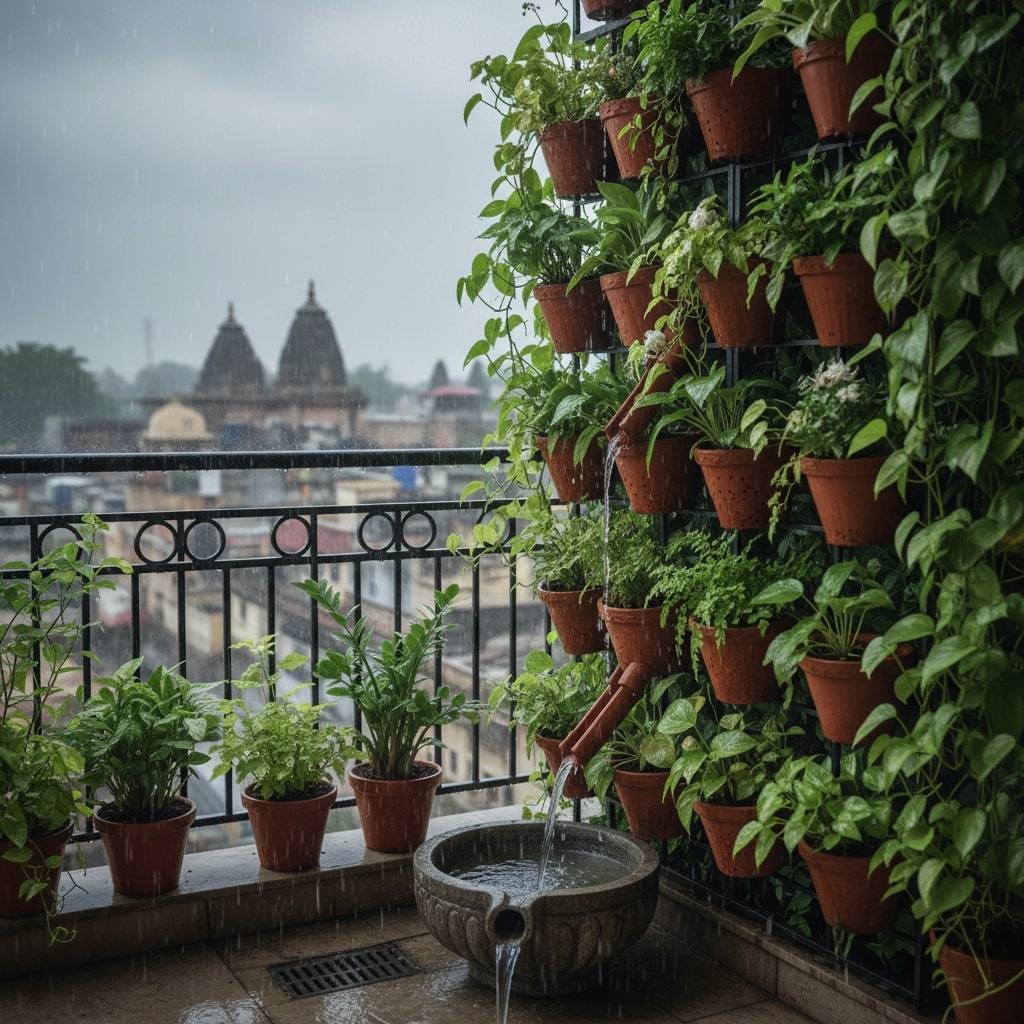
More Soil Drainage Tools: Tried & Trusted (Second Affiliate Table)
| Product | Best For | Features | Price (₹) | Buy Link |
|---|---|---|---|---|
| Aqua Systems Drip Kit | Hassle-free watering | Timer included, beginner-friendly | 1,899 | Flipkart |
| Cocogarden Soil Mix | Fluffy, no-clog soil | Pre-mix, lasts 1 year | 649 | Amazon |
| Green Planet Drainage Kit | Heavy clay beds | Reusable, easy install | 1,199 | Flipkart |
| Meco Soil Tester | Rapid soil tests | Instant results, digital | 549 | Amazon |
| TrustBasket Planter Panel | Fixes soggy planters | Water runs off fast | 1,299 | Amazon |
| Ugaoo Organic Fertilizer | Nutrient boost | Slow-release, 1kg pack | 299 | Amazon |
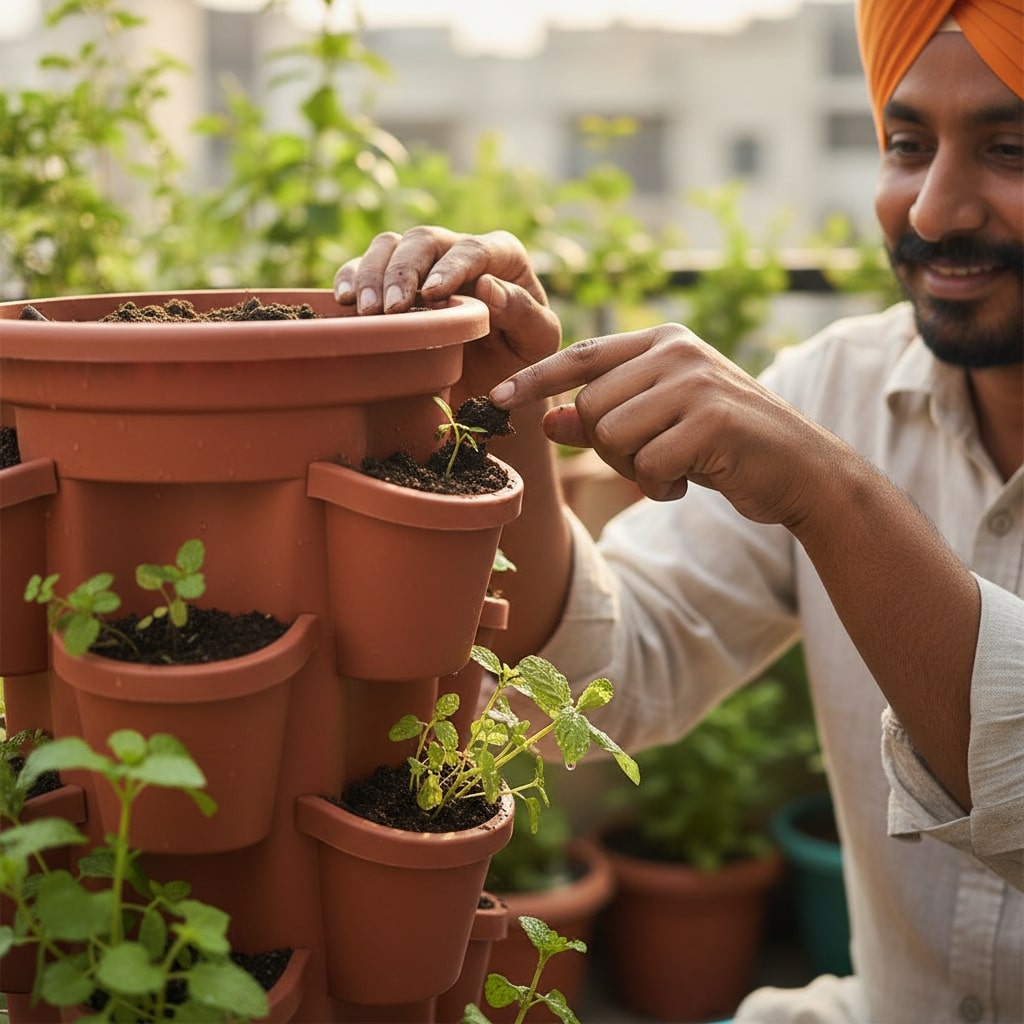
At a Glance: Key Takeaways
✅ Fix drainage first—most vertical garden failures start with waterlogged soil
✅ Use 40% cocopeat + 20% perlite for ideal soil mix in vertical setups
✅ Call a pro if DIY fails—knowing “who to call for drainage problems in yard” saves time and money
Conclusion: You CAN Fix Your Vertical Garden!
Vertical gardening brings joy, but also a few headaches.
As someone who has made every mistake (and then some!), I promise—most common vertical garden problems and solutions boil down to understanding soil, water, and aap ka little bit of TLC.
Don’t stress over clay soil or a few yellow leaves.
Instead, apply these stepwise tips, check my detailed resources, and adjust seasonally.
Remember to use the right soil mix, monitor drainage regularly, and follow the “how to improve soil drainage in garden” techniques we discussed.
For tough clay soils, always remember the amendments for “how to improve soil drainage in clay soil“.
And when problems persist or feel overwhelming, don’t hesitate to ask “who to call for drainage problems in yard” and get professional help.
If you’re still stuck or wondering “who to call for drainage problems in yard,” never hesitate to consult a pro—problems caught early save money and worry!
Explore more vertical gardening tips and seasonal checklists on FlatGardening.com.
Happy gardening, dost! 🌿
Frequently Asked Questions
1. How often should I check drainage in my vertical garden?
Check every 2–3 months, especially before and after the monsoon.
This is crucial for “how to improve soil drainage in garden” and prevents root rot before it starts.
2. Can I use regular garden soil in vertical planters?
Only if amended—garden soil alone holds too much water.
For “how to improve soil drainage in clay soil,” always mix with cocopeat (40%), sand (20%), and compost (20%).
Never use 100% clay or garden soil in vertical setups.
3. What’s the best drainage layer for vertical gardens?
One-inch of gravel, broken bricks, or coconut husk net under the soil in every pocket/pot. This keeps roots dry and healthy by creating space for water to flow out quickly.
4. How do I know if my vertical garden has drainage problems?
Look for slow water outflow, pooled water on the soil surface, yellowing leaves, and a sour smell after watering. If you notice this in your “how to improve soil drainage in raised beds” setup, fix it immediately before root rot sets in.
5. Who to call for drainage problems in yard or vertical garden?
A landscape installer or garden drainage professional can assess and fix complex issues. If damage is structural (cracks, seepage), call a mason too.
Getting the right answer to “who to call for drainage problems in yard” can prevent a major headache later—experts cost ₹500-4,000 depending on the work needed.
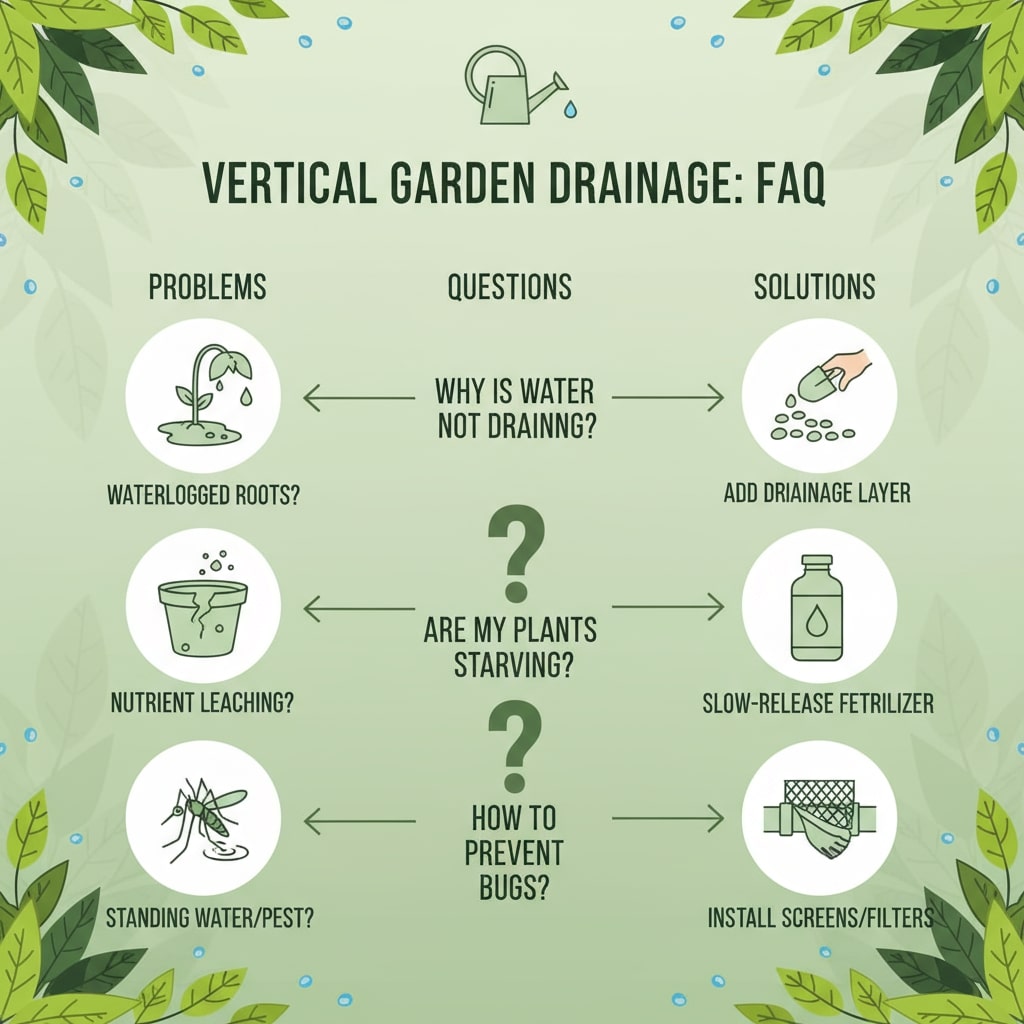
About the Author: Zaid Ansari
Zaid Ansari is a passionate Indian gardener and founder of FlatGardening.com, creating practical content for urban dwellers who want to grow thriving plant walls—even in Indian cities.
His tips combine hands-on mistakes, real-world hacks, and an honest love of helping beginners (especially those with just a balcony!).